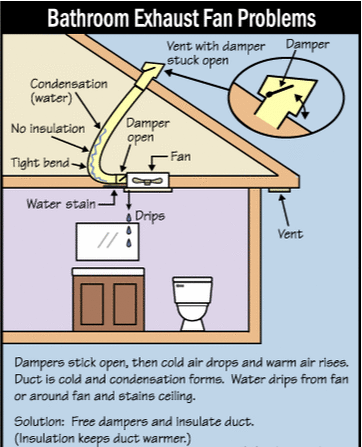|
There are many things that you know/heard:
- Radon is a colorless, odorless, and flavorless gas at ordinary temperature and pressure. - Number 1 cause of cancer for non-smokers and #2 cause for smokers. - Radon is present in the air nearly everywhere, and everyone breathes in radon every day, according to the National Cancer Institute. - The Surgeon General’s Office have estimated that as many as 20,000 lung cancer deaths are caused each year by radon. - Click here for more facts. Here are some things that will help reduce Radon gas levels in your home. -Check if your furnance’s fresh air damper is working correctly. -Install a fresh air damper if you do not have one. -Seal your sump crock. -Seal any cracks in the floor. -Seal any gaps where the floor meets the wall. Is there an existing system in place? Who installed it? Is it “properly installed”? Systems may be installed by those who are untrained, ignorant, or willing to do a "least cost" system that may have negative effects on radon levels, air quality, and energy use. The EPA recommends testing every two years. Many communities offer free radon test packs. You can also check your local hardware store and purchase them for $10-$15. While there is no "safe" level of radon, the goal is radon levels as low as reasonably achievable. Properly installed systems have proven capable of reducing any level of radon to below 4 and in most cases below 2. Continuous Radon monitoring is becoming more and more popular. The unit I use is WAVE, it’s a smart detector that sends results to your phone. And now they have introduced the WAVE PLUS, which measure Radon, Temperature, Pressure, Humidity, TVOC and CO2, for a little more. Click here for their website. The challenge of addressing radon in home inspection will continue to grow as states pass radon specific disclosure laws, banks enact stricter underwriting requirements and may expand dramatically and quickly if federal housing finance entities adopt radon testing and mitigation requirements. For example if Radon is disclosed above 4.0, many underwriters now require a mitigation system be installed. State of WI requires Radon piping be installed on all new construction. Real Estate professionals have adopted new addendums in regards to Radon testing. A great resource to address the most frequent questions: sosradon.org While some real estate agents and inspectors think that radon testing is required (which is not a bad thing), it really is not. In many communities, especially those areas with higher radon potential, radon testing is usually a standard procedure, even though it is not required by law. Unfortunately, in many other locations, people think, "radon is not a problem" which, of course, is not true and leads to a lack of testing and recognition of the risk posed by long-term exposure to elevated radon levels. Regardless of the views of the participants in real estate transactions, if spelled out in the offer to purchase it is critical that home inspectors conduct appropriate and accurate radon measurements, in a timely fashion, so you have a sound basis for the mitigation decision negotiation.
4 Comments
The fan’s damper can also get stuck in the open position, allowing hot air into the cool duct and creating condensation. Check the small damper at the fan. It should open when the fan is on and close when the fan turns off. This damper responds to fan pressure and gravity. Most vent connectors through the roof or sidewall should also have a damper to keep cold air out, and it should open and close with fan operation.
For many years, contractors installed bath fan vent ducting incorrectly, creating a bend or low loop to catch condensation. This just allows water to accumulate and may cause a large leak when the water lets go. Also assure the bath vent terminates to the exterior. Any bath vent that terminates in the attic or near an attic vents can cause moisture issues in the attic. |
Author
Amelia's Home Inspection offers the highest quality Home Inspection services in Greater Milwaukee, Wisconsin at an affordable price. A home inspection provides an analysis of potential fire hazards, home safety and health risks to your family. Archives
January 2020
Categories |
Amelia's Home Inspection • [email protected] • www.AmeliasHomeInspection.com


 RSS Feed
RSS Feed